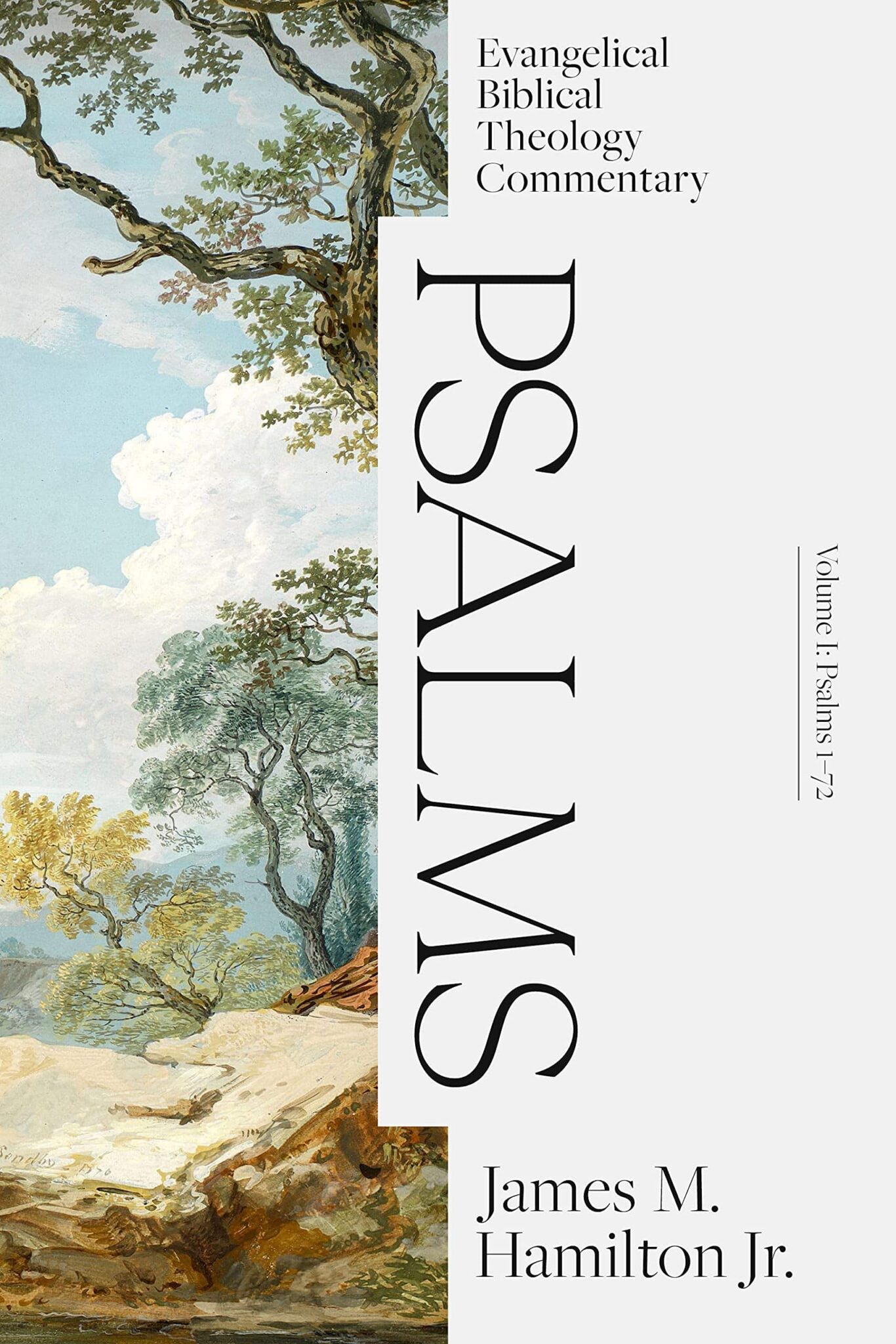James M. Hamilton. Psalms. 2 vols. Evangelical Biblical Theology Commentary. Bellingham: Lexham Academic, 2021. 1,312 pp. $79.99.
It is no secret that among evangelicals today the psalms are mostly ignored in corporate worship. Perhaps a line or two will be cited as a transition between songs; maybe a contemporary song will take a phrase from a psalm and repeat it over and over again. But not much more. Numerous factors contribute to the decline of psalm singing among Christians, but one central reason for contemporary neglect of the Psalter may be that most Christians today do not understand this God-inspired collection of songs, especially the intentional editorial organization of the 150 songs into five books in a particular order for a specific purpose. Pursuit of understanding the deliberate purpose and arrangement of the psalms among Christians was derailed in the twentieth century, largely as a result of Hermann Gunkel’s approach to the psalms that focused on their genre. This individualized—and, in many ways, sterilized—the psalms. However, study of the canonical shape of the Psalter has gained a sort of revival in OT scholarship, first spurred by Gerald Wilson’s 1985 dissertation and the subsequent work of Gordon Wenham.
It is into this renewed emphasis on the Psalter’s canonical organization that Jim Hamilton enters with his two-volume commentary on the Psalms. Hamilton’s goal is to interpret “the Psalter as a book found in the canon” (15). He believes that “the inspired text is the canonized text” (11) and “would thus attribute inspiration not only to the individual authors of each psalm but also to the editor(s)/anthologist(s) who put the book of Psalms into its canonical form” (13). This means that in order to gain most from what God intends for us in the psalms, we must interpret each individual psalm in light of its place in the larger narrative. Hamilton places a significant weight on the use of chiasm as a structural device that helps to uncover the larger narrative shape as well as smaller sections within five books. “In this way,” Hamilton suggests, “chiasms become exegetically productive, showing the reader how the meaning of the whole communicates more than the sum of its individual parts” (53).
Furthermore, Hamilton is concerned that reading translations of the psalms often cause readers to miss “thematic and linguistic points of contact [that] create a wider web of meaning, linking one psalm to those that surround it, forging connections that make the individual psalms seem like different verses of the same song” (65). Therefore, Hamilton has supplied his own translations, intending to “make the link-words between psalms explicit in an effort to allow the author-intended innerbiblical resonance to reverberate in fulness” (64).
What results is a commentary on the psalms that resembles others in that each psalm is treated individually, but that is unlike most others in that Hamilton both interprets and explains each individual psalm within its place in the broader canonical shape. He suggests that Book 1 (Pss 1–41) traces David’s establishment as king, while Book 2 follows his bringing the ark to Jerusalem (Pss 42–50), sin with Bathsheba (Ps 51), consequences (Pss 52–60), and recovery (Pss 61–72). Book 3 (Pss 73–89) follows Solomon and subsequent kings along the downfall, destruction, and exile of God’s people. Book 4 (Pss 90–106) answers the uncertainty that God will remain faithful to David’s seed by reaffirming Yahweh’s reign and his steadfast faithfulness to his promises. Book 5 (Pss 107–150) anticipates the future reign of David’s heir forever, resulting in universal praise.
Another value in Hamilton’s treatment of the macro-structure of the psalms is its place in the broader narrative of Scripture’s storyline. Hamilton summarizes: “The Psalms speak the words of a loyal son recounting and responding to the promises of a loving Father” (2). He argues that this understanding of the psalms “makes many assumptions” rooted in the “wider canonical context” of the Bible’s overarching story: “God told Abraham that kings would come form him (Gen 17:6), and the biblical authors expected on to arise from the line of Braham through Judah to fulfill Gen 3:15 by crushing the head of the serpent and his seed (Num 23:21, 24; 24:7, 9, 17–19). This king was to be a man of Torah, making his own copy in his own hand that he would diligently study (Deut 17:14–20)” (2–3). This sets David’s role in the psalms in its larger context, which is tied into the story of redemption and the future Son of David who will fulfill God’s promises of a king.
I have personally been looking forward to this commentary since I was introduced to the canonical approach to psalms studies years ago in O. Palmer Robertson’s The Flow of the Psalms: Discovering Their Structure and Theology (P&R, 2015) and subsequently discovered Hamilton’s project. The commentary does not disappoint. Readers may quibble with how Hamilton situates individuals psalms in the broader narrative and how he interprets the narrative itself, just as they might with interpretive decisions in any commentary. Additionally, considering chiasm to be the central structural key may at times seem stretched. However, Hamilton’s work is to be praised for its value and contribution to psalms studies, and this will be my go-to commentary for the Psalms in years ahead.
Scott Aniol
G3 Ministries
Grace Bible Theological Seminary





